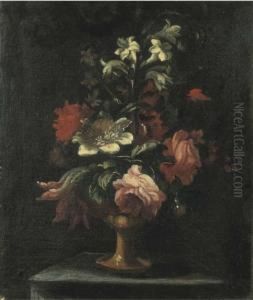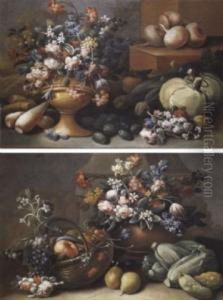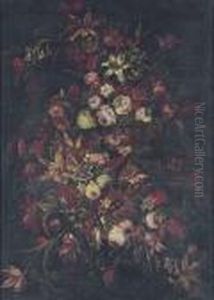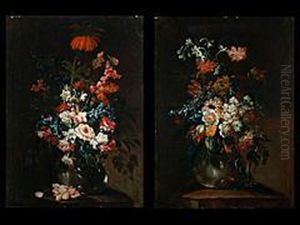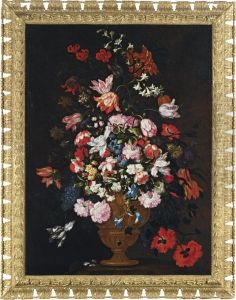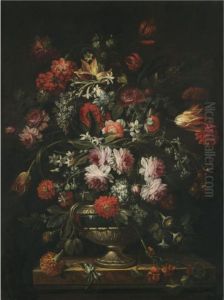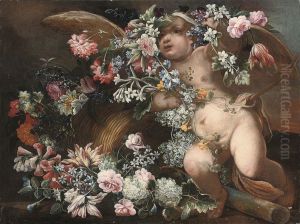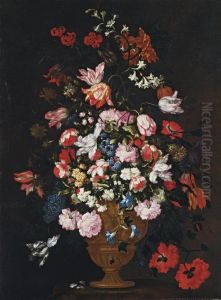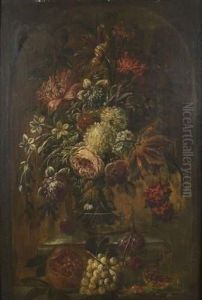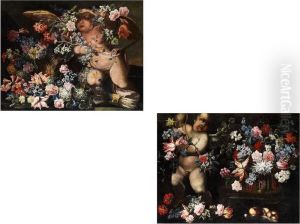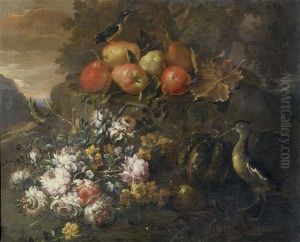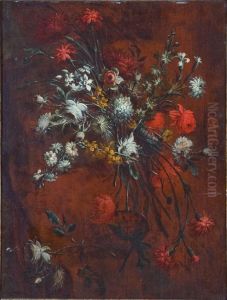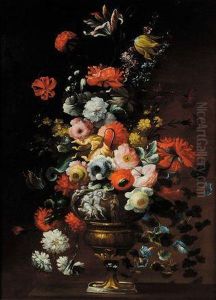Felice Fortunato Biggi Dei Fiori Paintings
Felice Fortunato Biggi, known as Biggi Dei Fiori, was an Italian painter from the late Baroque period, born in 1650 in Ferrara, Italy, and died in 1717. He is particularly renowned for his exquisite depiction of flowers, which earned him the moniker 'Dei Fiori' meaning 'of the flowers' in Italian. Biggi's work is characterized by its meticulous attention to detail and vibrant use of color, which brought the flora he painted to life on canvas.
Biggi's early life is shrouded in some mystery, but it is known that he was active primarily in his hometown of Ferrara. He was deeply influenced by the Baroque movement, which was dominant in Europe during his lifetime. The Baroque style, known for its expressiveness, intricate details, and dramatic use of light and shadow, is evident in Biggi's floral compositions. He infused this style with a unique sense of realism that set his work apart from his contemporaries.
Throughout his career, Biggi focused almost exclusively on still-life paintings, particularly floral arrangements. His compositions often depicted flowers with such realism and intricacy that they seemed to transcend their two-dimensional plane. Unlike many of his peers, Biggi did not venture much into religious or historical subjects, preferring instead the universality and timeless appeal of nature's beauty.
Biggi's contributions to the art world were significant, as he helped to elevate the status of still-life painting within the Italian Baroque tradition. His works were highly sought after during his lifetime, and he received commissions from notable patrons, including members of the Este family, the ruling dynasty of Ferrara. Today, his paintings are preserved in various museums and private collections, where they continue to be admired for their beauty and technical mastery.
Despite his accomplishments, Biggi did not form a large school of followers, and after his death, his name faded into relative obscurity. However, in recent years, there has been a renewed interest in his work, with art historians and collectors recognizing the unique contributions of Biggi Dei Fiori to the Baroque era and the genre of floral painting. His legacy lives on as a testament to the enduring appeal of natural beauty in art.
